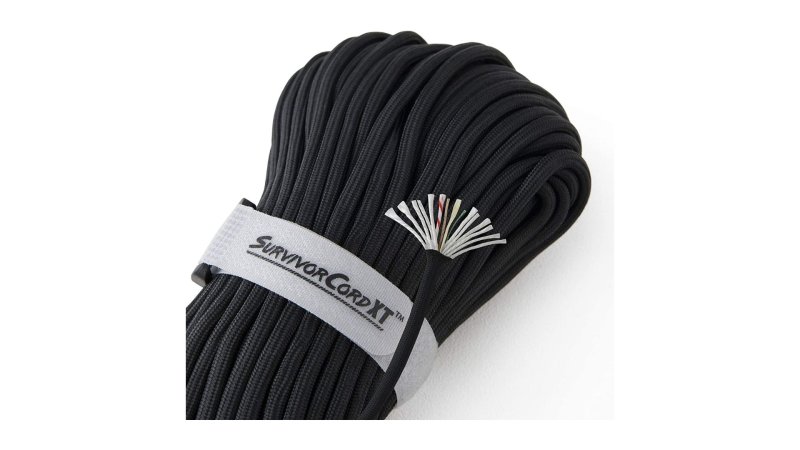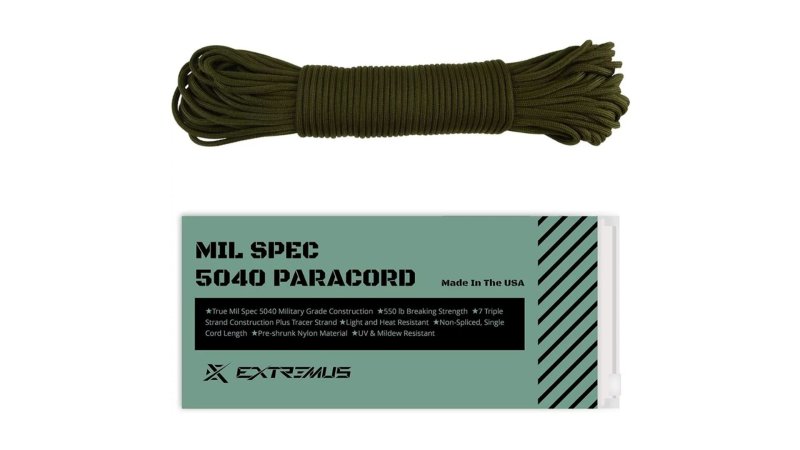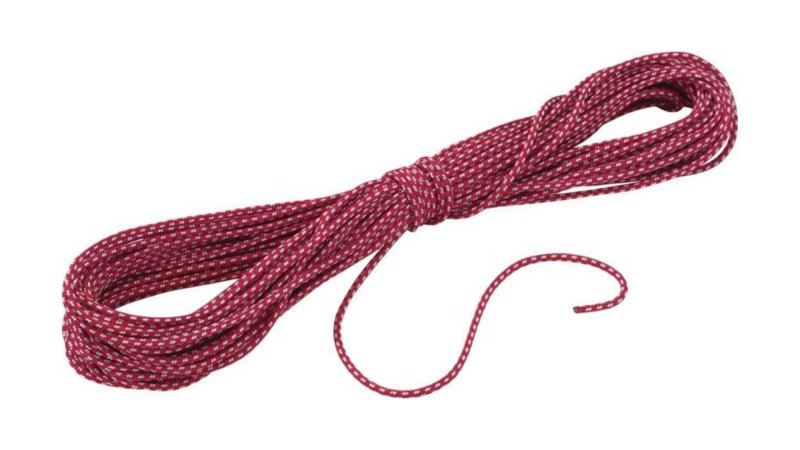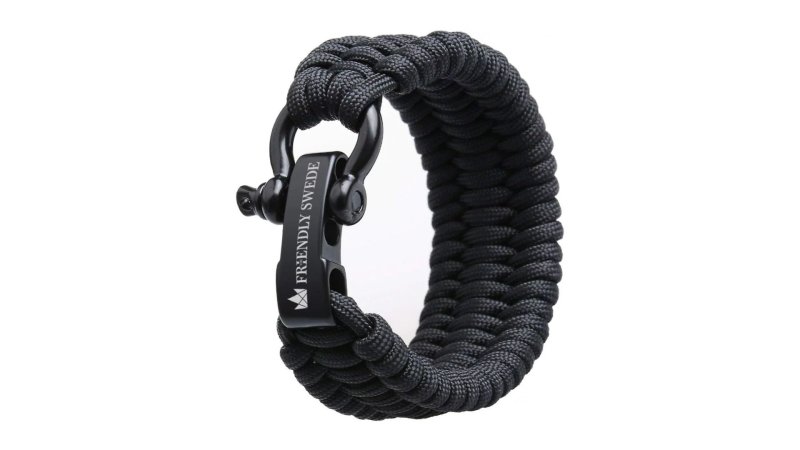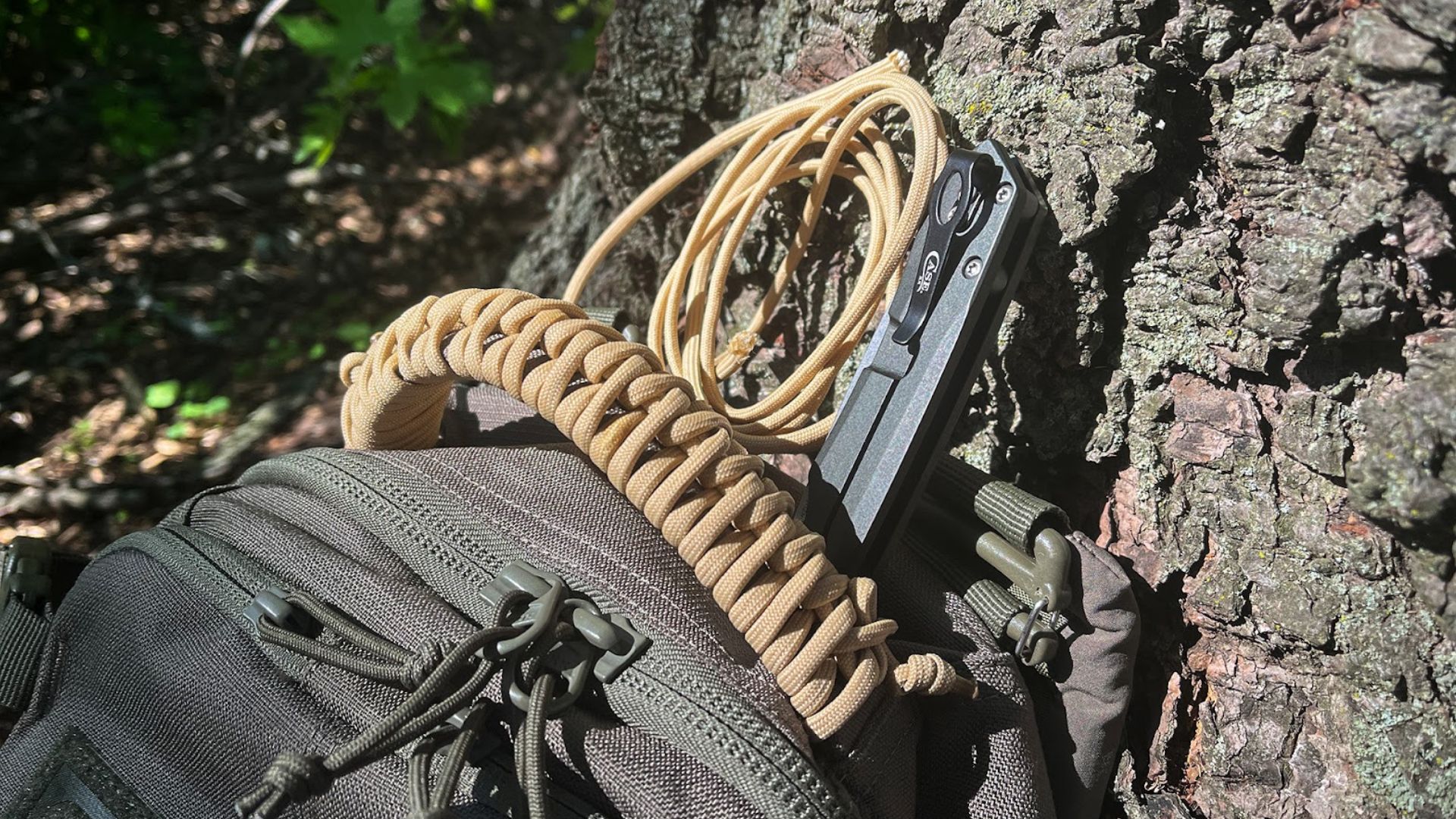

We may earn revenue from the products available on this page and participate in affiliate programs.
The best paracords are the ones you know how to use effectively in the field. It’s a good idea to practice with the cheap stuff and maybe have a few feet available for basic tasks, but I recommend having something more capable in your camping pack or go-bag. By the time you reach the comments section (where I encourage you to leave a few tips and tricks of your own), you’ll have the know-how to buy the best paracords for your needs and the resources to build your skills with them.
I realize that most paracord will be braided into a keychain or wrap, never to be touched again. Some will be used to suspend a poncho liner as a makeshift shelter in the field because tents, we all know, are for the weak. Any old discount paracord you find online will work for those jobs, but if you ever actually need paracord in a life-or-death situation, you’re going to want mil-spec 550 or 750 cord that can bear a sizable load and be broken down into many usable components.
The best paracords for survival have bonus features like tinder, fishing line, and metal filament woven into the internal strands. This style of survival paracord can turn your bootlaces or knife handle into a miniature survival kit in a matter of seconds. Of course, that’s only if you took the time to learn applicable bushcraft skills before the time comes.
- Best Overall: Titan SurvivorCord XT
- Best Value: Extremus Type III 550 Cord
- Honorable Mention: MSR Ultralight Utility Cord
- Best Bracelet: Friendly Swede Trilobite
Methodology
Before I even started my search for the best paracords, I took a minute to revisit some of the ways people use the stuff. All of us have probably used 550 cord to build a shelter out of a tarp or tie serialized gear to ourselves (shoutout to my peers who got to participate in the great PEQ-15 search of 2011), but more important tasks include repairing broken gear, building more durable bushcraft shelters, building makeshift tools, and even catching something to eat when the going gets tough. I even took the opportunity to practice some of those skills by upgrading my trusty get-home bag with a paracord-wrapped handle.
After finding a solid value option for my budget-conscious readers, I dug a little deeper to find more advanced paracord options with higher load ratings and better features. One of my guiding lights was MIL-C-5040H, the U.S. military’s standard for paracord construction. The rest of my picks had to meet or exceed that standard. After sifting through what seemed like endless search results of suspect products, I found two that I would trust to get me to the ends of the Earth and back.
Best Overall
Titan SurvivorCord XT
Pros
- Carries a static load rating of 1,000 pounds
- Features tinder, fishing line, and a Kevlar thread
- Resists heat, mildew, and UV damage
Cons
- Heavy, expensive, and overkill in most situations
- Only available in black
Product Specs
- Material: Nylon, polyester
- Internal strands: 12
- Load rating: 1,000 pounds
- Length: 100 feet
Best Value
Extremus Type III 550 Cord
Pros
- Affordable without sacrificing quality
- Meets MIL-C-5040H, the U.S. military’s paracord standard
- Available in green and tan
Cons
- Bare-bones military paracord with no bonus features
- Not as versatile as survival paracord
Product Specs
- Material: nylon
- Internal strands: 7
- Load rating: 550 pounds
- Length: 25, 50, or 100 feet
Honorable Mention
MSR Ultralight Utility Cord
Pros
- Great for smaller jobs
- Reflective thread makes this cord easy to spot
- Saves weight when every ounce counts
Cons
- Not good for tactical use
- Tensile strength is only rated at 200 pounds
Product Specs
- Material: nylon
- Internal strands: not specified
- Load rating: 200 pounds
- Length: 32 feet
Best Paracord Bracelet
Friendly Swede Trilobite
Pros
- Takes the assembly out of paracord bracelets
- Easier to carry than loose paracord
- Available in black, green, and camouflage
Cons
- Paracord can be weakened by exposure to sunlight and water
- Only provides a few feet of paracord
Product Specs
- Material: polyester
- Internal strands: not specified
- Load rating: 550 pounds
- Length: 11-13 feet (depending on size)
Our verdict on paracords
The Titan SurvivorCord XT is the best paracord you can get. Yes, it’s expensive for what most people will use it for, but it’s also a cheap form of life insurance. If you need a solid, reliable paracord for your next trip to the field, save some money and get a length of Extremus Type III 550 Cord.
Tips and tricks
As with any piece of gear, buying a paracord doesn’t make you much better off if you don’t know how to use it. Paracord is one of the best pieces of survival gear you can have, so hook yourself up and spend some time learning how to tie the best paracord knots, build a sturdy shelter, and make the most out of each individual component of your 550 cord.
- Not all paracord is built to the same standard. Make sure you’re getting a well-constructed paracord that meets MIL-C-5040H if that’s what you intend to buy.
- Paracord is tough, but not invincible. The ideal storage place is dry and protected from direct sunlight.
- To prevent fraying, burn the ends of your paracord with a lighter to melt the loose strands together.
- The more knots you master, the better you’ll be prepared to build a shelter, repair broken gear, and become a general bushcraft badass.
- Braiding your paracord with a cobra or snake knot is a great way to keep it untangled and compact for storage.
- If you’re going to use paracord for a handle wrap, use a quick-release method that will let you access the full length of the cord in a hurry.
- Take some time to research unconventional uses for paracord — like making fishing lures — to get the most out of it.
- Even a few feet of paracord can be used to make survival gear like a gill net if you know what you’re doing.
- Paracord rifle slings are growing in popularity. Just remember that if you need to use your paracord, you’ll no longer have a rifle sling.

FAQs about paracords
You’ve got questions, Task & Purpose has answers.
Q: How can you tell if a paracord is real?
A: Since “real” paracord is anything that does what you need it to do, your first step is determining why you need it in the first place. Before you get wrapped around the axle about a paracord that can do everything under the sun, decide if you even need to care.
Q: What’s the difference between 550 and 750 paracord?
A: The most common kind of paracord is 550 cord, which typically has seven internal strands, a four-millimeter diameter, and a static load rating of 550 pounds. The larger 750 cord typically has 11 internal strands, a five-millimeter diameter, and a static load rating of 750 pounds.
Q: Can a paracord hold a person?
A: Labels like “550” denote how many pounds of stress a given cord can endure before breaking. Remember that you apply much more force than your bodyweight if you’re moving. Even if the cord itself can handle a certain load, that doesn’t mean the knot and anchor at each end are up to the task.
Q: Does braiding paracord make it stronger?
A: Yes, multiple pieces of paracord that provide mutual support will be stronger than a single strand. Be reasonable, though; even the mighty paracord has its limits and structural engineers study advanced math for a reason.
